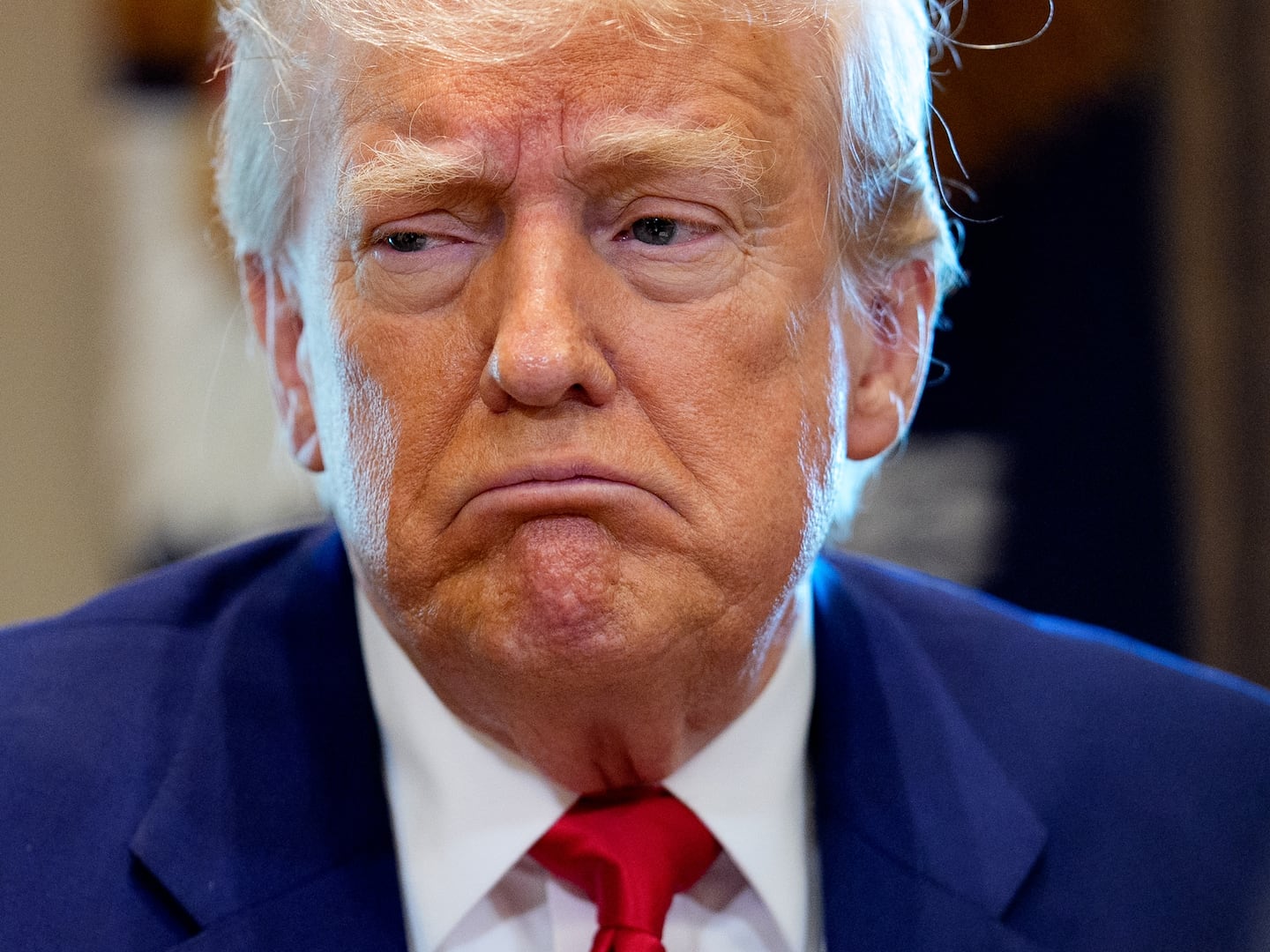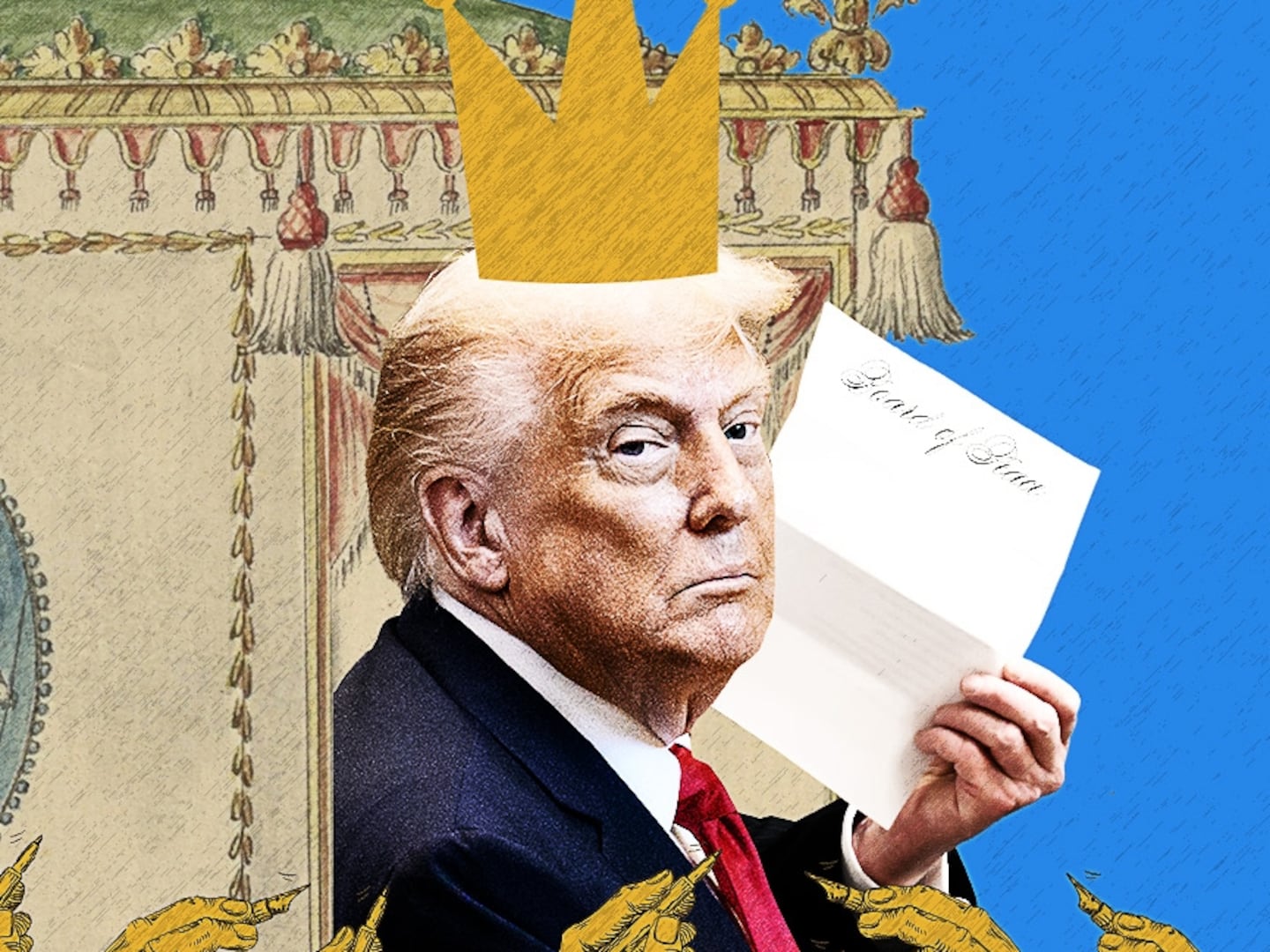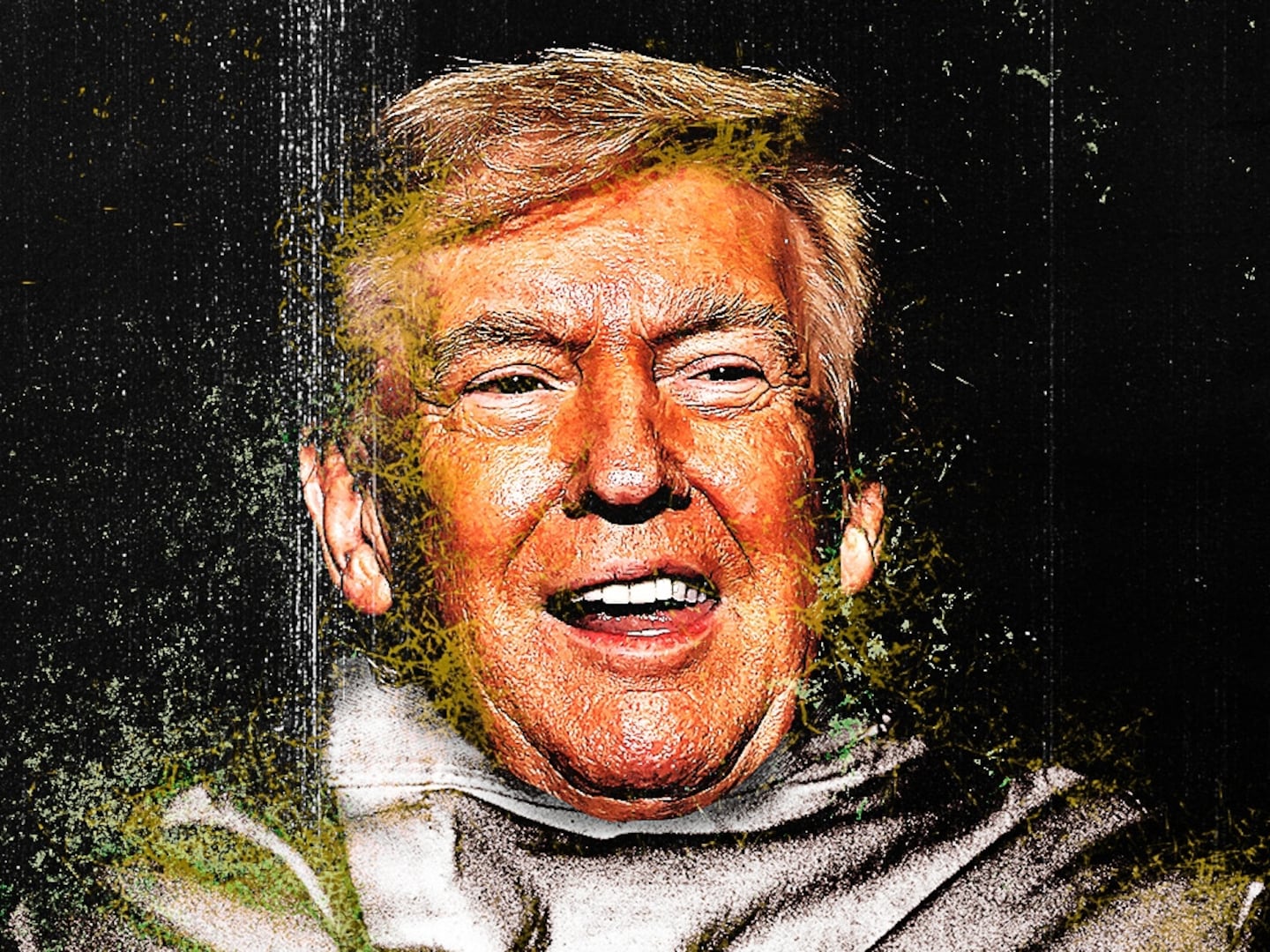Donald Trump strode into a ballroom at the Plaza Hotel he owned on October 12, 1988, to announce his acquisition of yet another trophy property: the venerable Eastern AIR Shuttle, which had pioneered the original power flights between New York, Washington, and Boston.
The 42-year-old Manhattan real estate tycoon exuded an outsize confidence, airily waving aside any concerns about his ignorance of the business he was wading into. “It’s a diamond, it’s an absolute diamond,” he crowed to the packed crowd.
Classic Trump bravado, of course, but the airline insiders he’d tapped to run the show were already rolling their eyes. “When he started with that ‘diamonds in the sky’ line, I said, ‘We’re going to have to settle for cubic zirconia,’” said Henry Harteveldt, a former TWA and Continental executive who was the nascent line’s new marketing director.
“We inherited more than 20 of the world’s oldest 727 airplanes, because that’s what had been allocated to the shuttle,” said Harteveldt, now head of Atmosphere Research, a travel data research firm. “At first all we could do was to clean the planes and put a sticker with Trump’s name on the side.”
And so began one of the stranger episodes in aviation history.
Trump, according to sources close to him at the time, seemed less interested in the inner workings of the business than in what it could do for his brand. “It was this flying billboard for Trump properties,” said Harteveldt. “At the time, he was expanding his casino business [in Atlantic City], jet fuel was still relatively cheap. It was a combination of vanity and the lure of an appealing business.” Trump, sources said, apparently also dreamed of creating a national airline 10 times the size of the shuttle, a natural fit with the hotels he was rapidly collecting.
That was not to be, and interestingly, Trump’s airline dalliance appears to have been airbrushed from his official biography. He makes virtually no mention of it in the numerous memoirs and self-help books he’s penned since its demise in late 1991 [with one exception: in the 2008 tome Trump Never Give Up: How I Turned My Biggest Challenges into Success, he admits that the shuttle “never turned a proper profit,” but in typical fashion, accepts no responsibility and blames the failure on ‘timing” and the vagaries of the airline business.] Other business setbacks like his casino bankruptcies have been spun into inspirational comeback tales in the Trump narrative—or used by Trump’s rivals for the GOP presidential nomination as a way to bash him on the debate stage. His airline adventure, on the other hand, is an outlier: maybe that has something to do with the fact that Trump never was able to get his airline to produce enough cash flow to pay down the massive debt Trump accumulated when he bought the shuttle.
The story does, however, reveal much about the Trump now appearing in the national spotlight. He lied about his competitors. He trotted out plans to attract customers—but many of them made no sense from a business standpoint. Those who worked with him at the airline describe him as a loose cannon; a generous and engaged boss on the one hand, obnoxious and impulsive at other times—especially in public.
As former Trump Shuttle president Bruce Nobles told The Daily Beast, “I cringed every time he opened his mouth.”
“He really didn’t understand the business and at times he said things that really weren’t helpful” to his new company, Nobles said. “That was his style and it really hasn’t changed.”
And this tale might also say something about how Trump may behave as this presidential contest continues: When that sunny business climate turned stormy, Trump got out of the airline business—and fast.
***
The aviation business has always been a tough one. More than a few corporate titans have been humbled by it. (Think Carl Icahn and TWA, Kirk Kerkorian and his MGM airline.) “I remember telling [Trump]: ‘There’s an old saying in the business: the way to make a little money in the airlines is to start with a lot,” said Nobles, who’d previously helmed the rival Pan Am shuttle. Airlines have been notoriously poor investments, what with high fixed costs and a vulnerability to unpredictable forces like gyrating fuel prices and economic downturns. In fact, although the economy in general was in decent shape in 1988, the airline business Trump was entering was in turmoil—dozens of airlines had shut down since deregulation was passed in 1978, and many major airlines had either merged or gone into bankruptcy court protection.
One of the first signs of trouble came soon after the deal was signed when the neophyte airline chief set out to destroy his rival—the Pan Am Shuttle, its only direct competition in the market. The Eastern Shuttle, which had had the market all to itself before deregulation, had struggled to keep up when New York Air, and later Pan Am, offered free drinks and food and made the Eastern flights (which then had neither) look spartan by comparison.
Trump decided he’d win customers away from Pan Am—by scaring them. Pan Am was unsafe, he said. He had no proof of this, of course; his message was simply: “I wouldn’t fly them; they’re losing money and their planes are old,” all of which was equally true of Eastern and the planes he’d just bought. Trump’s seasoned airline hands were horrified; even in the combative airline business, such talk was regarded as out of bounds, as it would only stoke more general fears of flying. Moreover, it revealed his lack of understanding of this business—at the time, competitors would help each other if delays or other problems arise. “We told him ‘Don’t attack Pan Am, they’re the grandfather of this business,’” said Harteveldt.
Next, Trump turned his attention to his fleet, where he was soon to get an education in airline economics. Trump had paid $365 million for the assets of the Eastern shuttle operation and its 17 planes, which he’d spun as a great deal—negotiated down from the $400 million asking price. But later, as the closing was delayed by Eastern’s bankruptcy and other bidders emerged, Trump tried to get Eastern chief Frank Lorenzo to lower the price, since the value of the asset had indeed diminished. Instead Trump ended up taking five additional planes as compensation, which he described as a victory in his book The Art of Survival, published in 1990, when the airline was still flying. “This allowed me to refurbish my fleet without taking any planes out of service,” he said.
True, but the shuttle needed only 16 planes to operate a full hourly schedule at its three cities, with one or two jets as spares, and extra aircraft are anathema to an airline—they don’t make money sitting on the ground. Even though Trump was later to deploy some of them on flights to Florida, those additional planes were later to prove a drag on the airline as it struggled to make enough money to service its heavy debt. “Lorenzo must have been laughing all the way to the bank,” wrote John O’Donnell, former president of the Trump Plaza Hotel, wrote in his book Trumped!
“The shuttle was a clear example of how the exaggerated value of his [Trump’s] name led him into a purchase whose foolishness was apparent almost immediately,” he added.
(The Trump organization declined to comment for this article.)
To his credit, though, Trump decided that since the planes, on average about 20 years old, needed an overhaul anyway, he could use the chance to spiff up passenger comfort and service. He spent more than $1 million on each jet, going well beyond the normal cabin upgrades to add thick maroon carpeting, maple-veneer paneling, beige leather seats, and even faux marble sinks and gold-colored fixtures in the lavatories.
“The bathroom was a work of art,” joked Nick Santangelo, who ran maintenance and engineering at the shuttle. “They used ideas from the hotel business, which wasn’t bad, but they didn’t always work.” Older jets in particular guzzle fuel and airline executives are obsessed with saving even a few ounces of weight. Not so Trump: “At first they wanted to put in a ceramic sink, that was too heavy,” said Santangelo. “Then one of his henchman decided they were going to put brass handles on the doors you use to get out in an emergency. Normal handles weigh a few ounces, and these things probably weighed five pounds each... you’d kill to save one pound, and they wanted to add 20 to 30 pounds to each plane.”
Still, the airline lured customers with frills like airport concierges who would book same-day reservations at fancy restaurants; gourmet food and drink and tarted-up departure lounges. “We spent a lot on service,” recalls Harteveldt. “Bagels and coffee in the morning; boxed dinners with sliced chateaubriand and salad; the flight attendants hustled to serve everyone meals and then pour two or even three rounds of drinks” in the 45 minutes the plane was in the air.
Trump’s flight attendants—the female ones, at least—wore matching fake pearl necklaces and earrings to go with what the Trump organization described as an “upscale” look, with outfits of navy with burgundy trim. The uniform belts incorporated the Trump Shuttle “T” logo.
It got noticed: an August 21, 1989 New York magazine column said that Trump apparently wanted his attendants to have “the look of old money.” The jewelry was a “required part of the uniform,” and the magazine quoted a spokesman as saying they were “real, of course,” but according to Harteveldt, they were in fact faux. “But we did raffle off a pair of real ones,” he said, and even as the go-go 1980s were winding down that was an unusual stunt for an airline.
And then there was the cult of Donald. Frequent travelers would often get thank-you letters after a flight with Trump’s personal signature. A glossy inflight magazine was launched, and Trump at first insisted that the cover resemble the Art of the Deal, his best-selling business book. “The attention to detail was incredible,” said Harteveldt.
“Pretty soon we were at 50 percent of the market, and keep in mind, we started with about zero,” the result of Eastern’s prolonged labor strife, said Nobles. “But it was also 50 percent of a shrinking market,” he said.
Yet another reality was setting in: Business travel was slowing in the Northeast.
Nonetheless, Nobles said the balance sheet improved as the shuttle regained market share, enough to show an operating profit, but not to cover debt payments. And the recession was not just affecting the airline but most of Trump’s other assets, like his hotels and casinos. In fact at one point Trump came up with a plan to help both, by giving away casino chips to his airline passengers in the expectation they’d come to one of his Atlantic City properties to redeem them. It was a bust. “I think something like two chips got cashed in,” Nobles recalled with a laugh.
***
Trump’s airline, for all its brass-handled glitz, was a relatively minor player. So in late 1989, he made a bid for control of American Airlines, then the largest airline in the country—and one of the few that had avoided a bankruptcy or merger to survive. His $7.5 billion offer was, at $120 a share, well above the $83 per share the airline was then trading for. But Wall Street and industry insiders were unimpressed, especially after Trump boasted that he’d picked up “substantial insight” in the business he’d just entered. He was, after all, taking on American CEO Bob Crandall, one of the most respected executives in the business. When Crandall immediately took steps to thwart the unwanted advance the bid fizzled. Did Trump he seriously think he could fill Crandall’s shoes? “He thought he saw an opportunity, and he likes to own the best,” said Nobles. “He thought American was the best airline, it was as simple as that.”
Was Trump chastened? Probably not, but it may have dawned on him at that point that he was out of his depth.
“Trump did see that it was a difficult business,” said Nobles. “The number of people who want to fly and the money they’ll pay to do that is pretty much out of your control. All you can hope for is your fair share, and we got our fair share. But the size of the pot was shrinking.” And in the final analysis, the shuttle, whether it had Trump’s or Eastern’s name on it, was a basic conveyance, its short hops that departed on the hour, with no reservations required, were closer to a flying bus than a first-class hop across the pond. Things like punctuality were far more important to its clientele than a better cut of steak. When Trump looked back on the experience in 2008 and wrote that “I knew it could be successful…. it just needed to be buffed up a bit, to make the travel time a bit more luxurious,” it’s clear how little he learned.
Meanwhile, relations between Trump and some of his shuttle executives had started to fray as market conditions went south. Nobles had offered his resignation in early 1990, because he disagreed with some of Trump’s ideas for cutting costs, some of which flew in the face of reality. “He insisted I fly the planes with only two pilots in the cockpit,” said Nobles, instead of the required trio at the controls. To a layman, that might not seem unreasonable, but it spoke volumes about Trump’s lack of understanding of the airlines—and of his very own fleet. The 727s Trump owned could not be flown with two pilots; it was designed for three and “would have been unflyable” otherwise, according to aviation expert (and Beast columnist) Clive Irving. “The FAA would have never permitted it,” he said.
But Trump was unmoved. He fired Nobles in the middle of 1990 and did not honor the executive’s severance contract. His reason? He told reporters at the time that while the airline was doing well, he just wasn’t pleased “with some of the people running it.”
By the middle of 1991, it was clear that the situation was not going to improve; Trump had raised $380 million from a syndicate of 22 banks led by Citicorp, putting in just $20 million of his own money. But the airline was just one of a cluster of assets that were at stake; and Trump finally hammered out a deal that gave bankers control of the airline; the climate was turned so sour that no bidders came forward to buy it. US Airways was later tapped to run it and by mid-1992, the plus-size “T” logos on the planes were replaced by more conventional airline livery.
For all that, it can be said that Trump’s transformation of the Eastern Shuttle was not for naught; he’d ended up stuck with damaged goods when he bought the shuttle and made changes that were welcomed by both customers and employees (given the condition the shuttle was in when he took over, however, anything would have been an improvement). But other claims he’s made about the shuttle over the years don’t really stand up; yes, he did rescue a distressed property—but other bidders did come forward at the time and the value of the shuttle franchise was beyond dispute. True, he hired more than a thousand employees from Eastern—and most of them, understandably were happy to have jobs and enjoyed the brief ride while Trump was lavishing perks on his passengers. Most of them continued on after the tycoon departed. And Trump’s brief shining moment as a flyboy remains a mere footnote in the annals of aviation.
As for the shuttle—it still chugs along today and on October 17 it will enter its fourth incarnation, as American Airlines formally takes over as part of its merger with US Airways.






